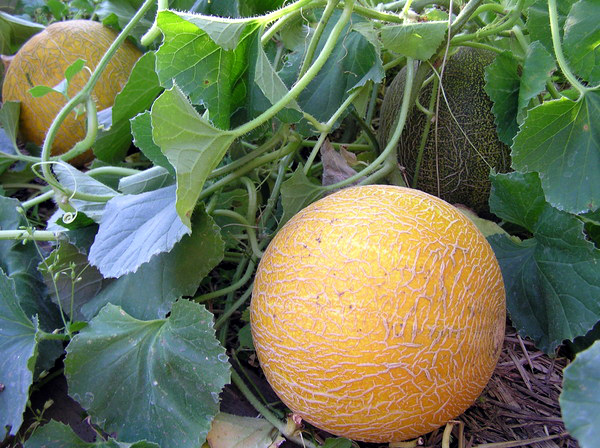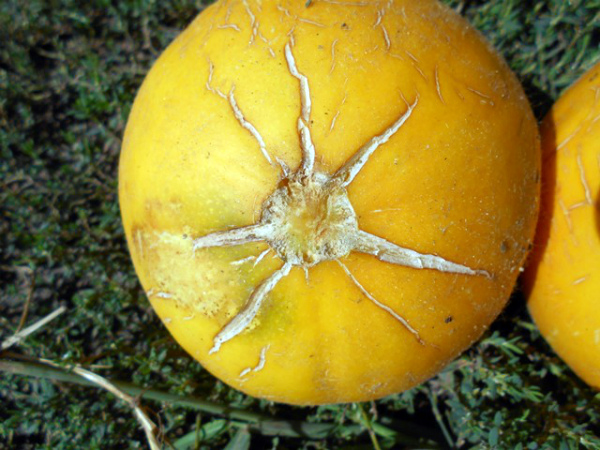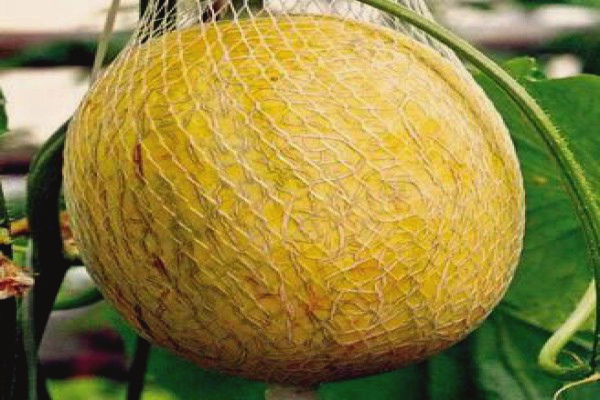How to determine the ripeness of a melon in the garden
Content
When the melon ripens
It is impossible to name the exact time when the fruits ripen, even within the same variety. The fact is that the ripening rate is influenced by many factors: the weather, the amount of fertilizers, irrigation, the quality and structural composition of the soil. Thus, when the melon ripens in the southern regions, in the suburbs or in the Urals, it has barely formed.
Speaking about proper care and compliance with all growing rules, we mean a standard set of care products for plants in the garden:
- pinching and pinching;
- timely watering;
- moderate feeding;
- correct loosening of the aisle;
- tying up the main shoot;
- protection from insects and diseases.
So, subject to these points and planting no later than mid-June, most early-ripening varieties give a harvest in mid-August. Mid-season and late-ripening varieties ripen by mid-September.
Growing a melon in a greenhouse (which is an ideal option in the Urals and Siberia), you can significantly accelerate the ripening of the crop and get the first fruits at the end of July.
Methods for determining ripeness
How to tell if a melon is ripe or not? Quite easy, just a little attention. First of all, ripeness can be determined by smell. Smell the pumpkin. If there is a distinct sweet aroma, then you can pluck it. Depending on the variety, it can be honey, spicy or floral. If the smell is heavy, with notes of foulbrood, then the fruit is already overripe. But the lack of smell indicates that it is too early to remove the fruit.
Pay attention to the condition of the pumpkin peel, it is quite easy to determine ripeness from it. Depending on the variety, the color of the peel varies from rich green to bright yellow, but this does not interfere with the check. The color should be even, although it may be slightly lighter from the side facing the sun (in greenhouses in the Urals, this amendment does not really help to determine). If you tie up melons in the garden, then the fruits should be intact (cracks, dents, foci of rot).
Ripe pumpkin is easily separated from the stalk; from the side of the flower it is soft. Such fruits can and should be collected from the garden so that the melon does not overripe.
A good way to determine ripeness is to scrape the skin off with your fingernail. If the pumpkin is ripe, the top layer is easily removed, if dents remain, the melon is overripe. You can find out if it's time to harvest the plant by patting the pumpkin with an open palm. The more muffled the sound after impact, the higher the ripeness of the fruit.
Storage
So, we have decided on the time frame in which to collect melons in the Urals. Now you need to figure out how to preserve the fruits. After all, it's nice to taste the still sweet and fresh pulp in the middle of winter! First of all, it is worth understanding which pumpkins can be stored, and which ones will only spoil all the preparations.
Collect only those fruits on which there are no signs of decay, cracks, damage.
Keep in mind that early maturing varieties are worse stored than late maturing ones. Therefore, it is better to collect melons in September and store them.
Make sure you have a dark, cool room with low humidity. It's good if you can fix the poles on which you hang the melons, or there is enough space for boxes or shelves. Remember that when storing a large number of pumpkins, do not allow them to come into contact with each other. To avoid the formation of rot, pumpkins are stored on a cloth, in sand or sawdust. It is also important to regularly check their condition and pick up rotten ones so that they do not spoil the rest of the fruits. Storing melons next to apples and potatoes is excluded, since they lose their smell.
Already cut melon is stored exclusively in the refrigerator for a maximum of 7 days. Usually, it retains its taste and suitability for consumption for 2-3 days. If frozen, then the period can be extended to several weeks, but at the same time retain the taste. In any case, it is recommended to place the melon pieces in airtight containers to prevent the flesh from picking up foreign odors.
Yet one of the safest ways to store your melon is by hanging it. To do this, in a cool room with low air humidity, the poles are fixed at a distance of 30-40 centimeters above each other. The fruits are cleaned of soil, dirt, and dried well. Each pumpkin is placed in a net or in a well-permeable cloth bag, and then hung on a pole. The better the ventilation in the room and the lower the humidity, the longer the melons can be kept fresh. However, with this method of storage, each fruit should be checked every 2-3 weeks and those showing signs of decay should be taken away and either eaten (after removing the spoiled area), or thrown away.
Video "Melons in the greenhouse are ripe"
This video demonstrates what a ripe greenhouse melon looks like and how to determine the ripeness of a pumpkin.




